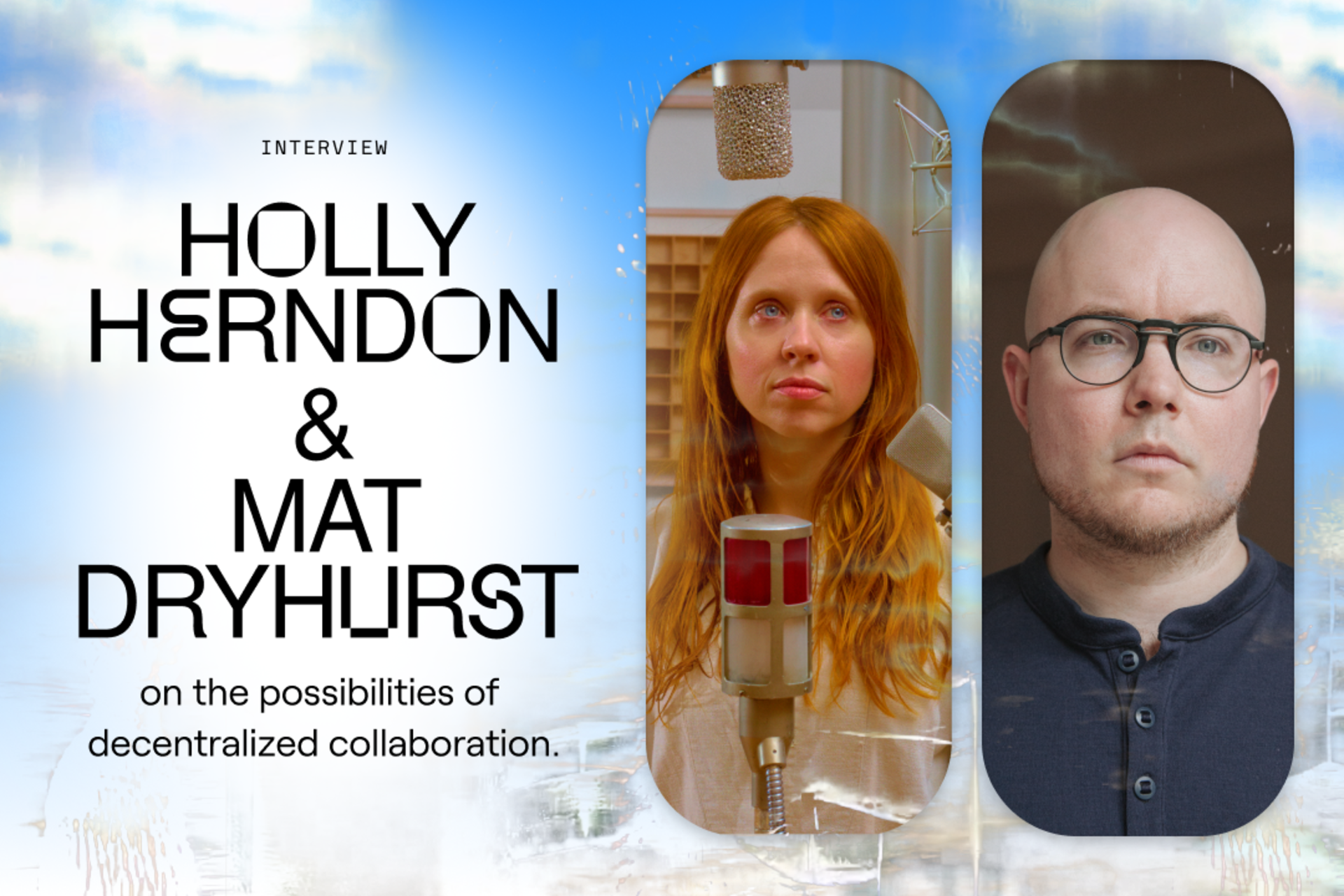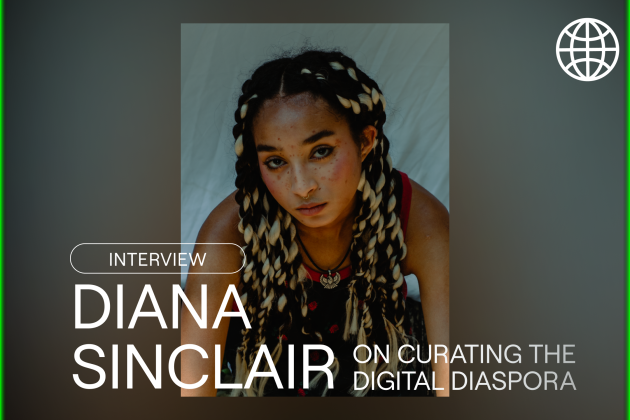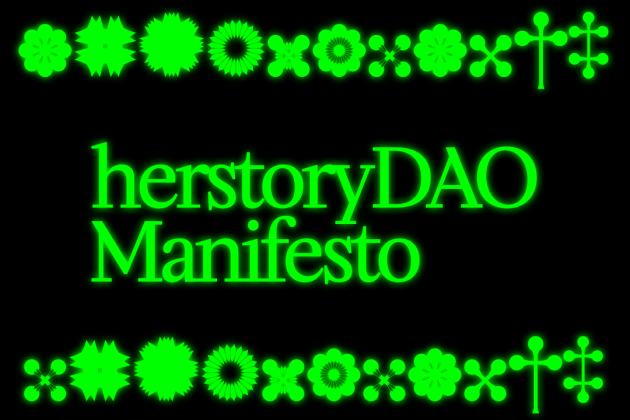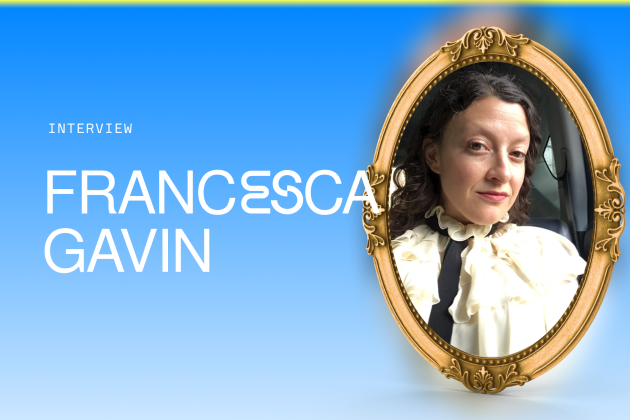Holly Herndon and Mat Dryhurst on the dreamy possibilities of decentralized collaboration.

Pioneering artists Holly Herndon and Mat Dryhurst have been pushing boundaries in music, art, and tech for years now. Known for their vast and eclectic experimentation, and for their ability to think and work critically with new technologies, the pair set a high bar for how to create thoughtful, multifaceted projects at the cutting edge of culture.
Since 2014, they’ve been inspired by decentralized technologies, and bringing together their peers to collectively explore what crypto, AI, DAOs, and more make possible. They also host the podcast Interdependence as a venue for mind-bending conversations with “interesting people [working] at the forefront of music, technology and policy.”
In advance of Holly and Mat’s first-ever NFT release, they spoke to Lindsay Howard, our Head of Community, to share more about their longstanding history working in the crypto space, why taking an optimistic approach to new technologies can make you vulnerable, and how they’ve been navigating the recent explosion of interest in NFTs.
How did you arrive at the particular pieces you decided to mint as your first NFTs?
Holly Herndon: I released a track named “DAO” in 2015—as DAOs were something I was already interested in—so this is a historical work in some ways. Back then, when I was a poor PhD student, I commissioned a text from Reza Negarestani called “Crossing the Interface” and turned it into an eight-channel surround performance experience. At the time I was still arguing with people about the validity of the laptop as an instrument and digital art in general, which now seems like an ancient conversation. To counteract that conservatism, I wanted to create a series of works that showed how ultra mediated spaces could be even more intimate than the spaces that we think of as naturally intimate.
The idea for the original performance was to have the main vocalist not be physically in the room (she was actually in a mic'd room in Oklahoma), but for the audience to still physically feel her presence in a hyper-real way. To get this effect, I used ambisonics, which is a way of arranging the speakers and using amplitude and panning to give the illusion that sound is physically moving through a space. In this way, the sound of her body was stumbling through the audience, slamming into the walls and interacting with people in a very visceral way—even though she wasn't physically present.
Mat Dryhurst: We couldn’t mint the work and recordings of that piece, because they’re part owned by our label. We also thought about how many hands the work has passed through, and how it's signed to all kinds of agreements, so we couldn't really offer any legitimate ownership of it through an NFT. It just would be dishonest to try to do that.
Holly Herndon: Because of that, for our NFT release, we decided to use the original text and some of the strands from those original performances, which had led to the creation of “DAO." To make it more layered, we’ve also been training a bunch of neural networks on the texts to animate different scenes.
Mat Dryhurst: The imagery of “crossing the interface” feels a bit pregnant at the moment where you're like, "Okay, something's coming, but it's still a little fuzzy.” It's quite a romantic idea. We felt like framing it as a fable would really fit the piece, and be a pretty appropriate way to visualize something that was previously quite abstract.
Holly Herndon: If you think about what machine learning is, it's basically learning from images from the internet or from distributed images of the history of the human archive of images, and it's dreaming those together into images that we're able to shape. It fits the theme of this distributed contribution to an artwork, which is an elegant DAO-like idea in many ways.
When you were thinking about DAOs back in 2015, was it through the lens of patronage or more about global collaboration? I think most people who are just learning about that term now think of it as collectives of collectors.
Holly Herndon: We were thinking about DAOs through the lens of collaboration, which was ultimately the theme of the entire “Platform” album release. It was an album made with people all over the world where all of the collaborations were done online. It was about trying to navigate this new ability to have such vast and rich collaborations with people that you may not even have ever met.
Mat Dryhurst: For me, fundamentally, the concept of a DAO is the idea of being able to enter into agreements with strangers online, with a degree of trust that you won’t get burned. That's the ultimate prophecy of a DAO in a sense: it’s a native way to create agreements and trust amongst people who you've not met or who might be pseudonymous. When we were working on “Platform,” that idea felt incredibly optimistic, especially as opposed to the main discussion at the time, which was mostly around Facebook and other centralized platforms' control over our relationships.
Holly Herndon: We were really frustrated with the kind of platform dynamics that were coming into play in 2014-2015, and by the inability to create our own space within these media landscapes. It's so homogenous: your YouTube channels, your Twitter feeds, all these things that were sold to us as this dream about the internet, and then all of a sudden it had become this totally corporatized space. The monetization part of DAOs is a very fundamental piece from an infrastructure level, but personally, I have always been more excited about them from a collaboration angle.
Mat Dryhurst: The DAO concept also seemed, at least to me, way more compelling and fitting as a 21st century medium than the platform co-op ideas that were happening in parallel. Even though DAOs got off to a rocky start, over the last six years they have usurped the original vision. So much energy has gone into making these decentralized agreements between people, which I think is really positive and dreamy.
Throughout your careers, I feel like you’ve maintained a kind of objectivity where you're able to comment on and experience new technology while not fetishizing it. How do you do that?
Holly Herndon: That’s very flattering. I don't know if that's something that we do consciously. I mean, I just feel like at this point, it's our collective art practice. We want to understand the landscape, while simultaneously being able to remain true to our principles.
What would you describe as your core principles as artists?
Mat Dryhurst: Initially, our core principles were about attempting to counterbalance critique with some kind of a way forward. I don’t want to negate other artists, but I think some people can get into a sort of terminal condition where they feel cleverest when they’re issuing critiques. At the same time, there can often be a social cost associated with trying to present optimistic alternatives.
Being optimistic is really where you can end up feeling super vulnerable, and perhaps because of that, it's not that common of a thing to be. Despite this, I still think the most useful critiques end with a proposal. And generally, people who’ve taken the time to think things all the way through are the ones who aren’t just grabbing at the low-hanging fruit and walking away feeling that their critique is enough.
As artists, the challenge with pushing toward optimistic proposals is that we do miss out on a lot of low-hanging fruit ourselves. It would be much easier to come out and make easily legible, boring dystopian AI pieces that play to stereotypes.
Holly Herndon: In a way, our optimism opens us up for more critique. When you come out with a proposal, then that's something that could be critiqued by someone else. But if you just come out with a critique, then you’re in a much safer position.
Mat Dryhurst: It's the harder path, but it feels like the more honest one for us. At the end of the day, we do a great deal of research to ensure that we can stand behind everything we put out. Amidst all this heat around crypto stuff, for example... I mean, there's a reason why we've waited this long to do NFTs, or anything similar.
Why are you entering into the NFT space right now?
Holly Herndon: That's a really good question. We've been working with machine learning for a long time, and with the last record we framed our ML work as a baby as it was still so nascent. As our tech has matured, we came up with this idea to create “Holly+” as a kind of digital twin of myself, which we will be sharing in the coming weeks. This was exciting for many reasons, especially since the idea of vocal ownership is something that I was researching in my PhD pretty heavily. In the future, I think people will be selling models of themselves, or of their vocal and physical likenesses. Similar to the way that my own voice has been under contract for the last 10 years with my record label, I see things heading towards an AI version of that.
It's an interesting legal and cultural question of, ”What does it mean to have a voice and own it?” Our solution to that question was to share it. We thought that this would be a great opportunity to create an actual DAO as a culmination of years of different research threads, many of which have collided now that a lot of infrastructural tech has come about—meaning it’s now something that we can actually implement.
Mat Dryhurst: The other part of it is that we've been thinking about making work in this area for a long time. NFTs have become an entire category in the last six months or so, and a lot of people suddenly know what they are. But we’ve been planning multiple projects in the Web 3 space for a while, before the NFT moment happened. So I guess the reason we're entering now, as opposed to earlier or later, is that we wanted to wait a little for some of the dust to settle, and we hoped to avoid the public perception of jumping on the bandwagon. And given the fact that we've been researching this stuff for six years, again, it comes back to our principles. We want to make sure that all the stuff we make is ultimately something we can stand behind.
Overall though, I don't think the space is going anywhere. I'm far less concerned with being perceived as entering and exiting quickly than I am with respecting the medium and being deliberate in the work that we’re making. That was always the goal. I mean, the Holly+ stuff we've been working on—that's been really challenging because a lot of the infrastructure itself is still so nascent that the rollout is going to end up being really, really slow. On the other hand, the work we’re minting as NFTs made sense to release now, since it's an evolution on an older piece that shines a light on how we imagined this moment would feel.
In a way, this NFT release is about honoring the history of our work in this space, while simultaneously updating it with something new that is timestamped for this particular moment.
Holly Herndon: Right. We wanted to honor the history of the things that we've been working on in this space, while also showing that we didn't just show up yesterday and start working in this space. We’ve been here.
Mat Dryhurst: I think the important thing for us is maintaining that consistency of, "We were thinking about this in 2014. And we will be here in 2024.”
Holly Herndon Another thing to note is that for us, there will always be some separation between the subject and the work that we make. That’s because the core interest of the practice has always been the human voice, which is so fundamental to human expression. So, for example, if I'm dealing with something like intimacy through the internet, it's through the lens of the human voice. It's never really about the technology itself—it's more about how the technology that we're dealing with is impacting something that's very fundamentally human.
You were the first musician to start talking about Ethereum in 2015. What interested you about it initially? Is the space materializing in the way that you imagined it would?
Holly Herndon: At the time, we were most interested in questions around the stack, and how infrastructure has such an impact on our emotional online lives, our relationships, and the art that we make. We were thinking, "Wow, there's this other entirely parallel infrastructure that could have entirely different implications for real-world relationships and real-world art making."
Some things with Ethereum have played out like a horror show, and then some things have been really nice surprises. But it’s still playing out.
Mat Dryhurst: The sacrifice of decentralization is there's no central authority to stop bad people from doing bad things, which is what I think people can’t get their heads around. They're like, "I saw a bad thing happen in crypto." You're like, "Yeah, that's the point." The freedom that allows for remarkable and good things to be built also allows for bad things to happen. Pets.com didn’t invalidate the emergent potential of the old internet. This is an opportunity to make the next internet better than the old one.
Holly Herndon: The most frustrating thing is how the narratives are playing out—just the things that are gaining such a large percentage of the public mind share. The criticisms are really frustrating because I feel like the positives, or the new things that it unlocks, aren't being represented in the wider narrative. I think that's a great failure of the crypto space right now, and that we all have to collectively reset in some way.
How does your podcast, Interdependence, contribute to your art practice, and vice versa?
Mat Dryhurst: One of the challenges with our work—well, it’s a challenge and a benefit—is that we have to create our own context. When the albums come out, if we don't create the context ourselves, the message around the album is going to be like, “Holly Herndon creates dystopian AI cyberpunk future,” which isn’t accurate. It’s no one's fault, it's just that this stuff is very new.
With the art that we make, there’s an attempt for it to feel like this sublime thing that you can just experience and not have to think about too hard. But at the same time, we’re interested in topics where there are rabbit holes that go very deep.
So with the podcast, these are conversations we would have anyway, to be honest. We wouldn't normally record them and we probably wouldn't make such an effort to make them legible. But the podcast helps to establish the context for both the work that we do, and the work that other people are doing, because when you're talking about this kind of emergent stuff—whether it's tech or conceptual work—it’s very interdependent.
Holly Herndon: It's also just a socially acceptable way to reach out to people that you really want to have a conversation with.
Mat Dryhurst: It's our burden in a way to create that context, and it turns out there's a lot of people who are really interested in that. It’s hard to find good information. We felt like we weren’t able to get access to that information and those conversations elsewhere. In 2015, we started a whole crypto community on Slack (Crypto Circle, started with Lars TCF Holdhus and Morgan Sutherland) with many of the early players who were interested in Ethereum and also cultural production.
Holly Herndon: We'd have meetups in our house.
Mat Dryhurst: Right. There'd be hundreds of people in our studio in Berlin, but it wasn't like a crypto schilling thing. It was just people figuring out, ”What is this, and what is there here?” Context and community are so essential. We have to establish that context for the work to thrive, and also for our own sanity.
Holly Herndon: We also often get lumped into this category of “musician,” which feels very alienating for us because that's just a very small piece of the picture. The podcast allows us to share our multifaceted interests and find others!
Read more

Diana Sinclair on curating The Digital Diaspora.

herstoryDAO Manifesto
